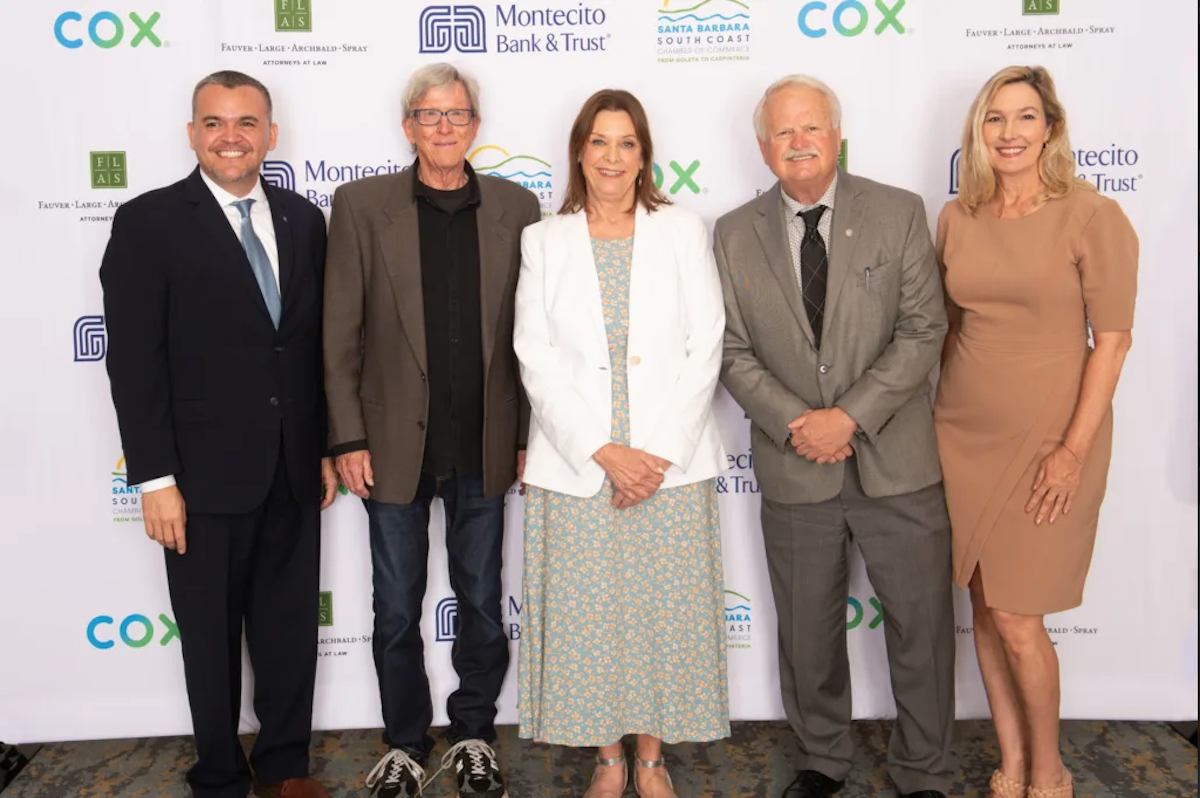Here’s What’s Happening in South Santa Barbara County
State of the City Luncheon Details New Projects Across Three Cities

On Thursday, April 20, mayors from Goleta, Santa Barbara, and Carpinteria reported on their year and the new plans for public safety, economic development, infrastructure, homelessness, and housing at the State of the City Luncheon, hosted by the Santa Barbara South Coast Chamber of Commerce.
Reports were given by Randy Rowse for Santa Barbara, Paula Perotte for Goleta, and Al Clark for Carpinteria. The Chamber of Commerce reintroduced “TechTopia,” the latest booming businesses in the county, which are focused on quantum AI, energy waste reduction, infrared, and diagnostics technologies.
Beyond that, cities’ main focus was on programs and projects that zeroed in on increasing housing, transportation and road developments, and improving the local environment. Here is a short summary of what each city is doing with money from their local taxes.
The city recently adopted a five-year improvement plan that is well underway, said Mayor Randy Rowse. Improvement of the library and its outdoor plaza for $9 million are part of an ongoing maintenance of the infrastructure of the city, as well as special projects like the De la Guerra Plaza renovation, a new police station, and the Dwight Murphy Field renovation.
The city also created a Sustainability and Resilience Department to focus on climate change. One of their strategies is to implement the Santa Barbara Clean Energy Program — carbon neutrality action plans with goals set for 2035 to help decarbonize cars and buildings.
The Community Development Department is focusing on ADUs (accessory dwelling units) to help add new housing. The department has created a webpage “that offers product project guidance, FAQs, checklists and handouts, a map of pending and permitted ADUs,” said Rowse.
The city’s website overall aims to allow more access to local resources and partners in Santa Barbara. The mayor noted it will include the new civilian oversight law enforcement system and an expansion of homeless outreach services to provide more operable hours to the downtown and waterfront areas.
Rowse also stated that conditions after the January storms had not worsened; there was only one water main break, and the city has enough water for needs to be met for at least three years.
Goleta Mayor Paula Perotte reported the city was engaged in a $42 million project that will add sidewalks and bike lanes, add in flood prevention efforts, and improve road conditions starting in Old Town on the Hollister strip. Additional projects include “environmental protections, cleaning up and restoring our creeks and beaches, protecting environmentally sensitive areas, and reducing air pollution,” said Perotte.
Goleta also plans for a new train station to be completed in about two years. On the environmental front, the city welcomed Monarch 1, the city’s first solar array at City Hall, and increased recycling opportunities. The city is even more ambitious with a 2030 goal of 100 percent renewable energy use and zero waste.
The recently approved Heritage Ridge Project will create 228 new market rate rental units and 102 affordable rental units. Planning is taking place for the Super 8 in Goleta to become permanent housing for the unhoused with onsite management and social services.
“The city is working on an economic development strategic plan that will be adopted in June,” said Perotte in her closing. “It will outline strategies aimed at creating a sustainable Goleta economy that will be equitable for all.”
Mayor Al Clark restated many of the same concerns as Perotte and Rowse. Currently, Carpinteria has been making road repairs, creating a skate park, and funding its library. The city created a Social Justice Racial Equity Program and is in the beginning stages of a Senior Services Program.
Real estate was Clark’s main focus. About 30 percent of homes in Carpinteria don’t have anyone living in them, he said, and the demand for housing has not improved due to short-term rentals and second homes. Short-term rentals now have a strict cap that is being enforced.
Much like Santa Barbara, Carpinteria is focusing on ADUs, also known as granny flats, and making pre-approved permits for easier planning. The city is also working with People’s Self-Help Housing to build more low- and middle-income housing, but at the same time trying not to take away from the area’s nature and wildlife in the process.



